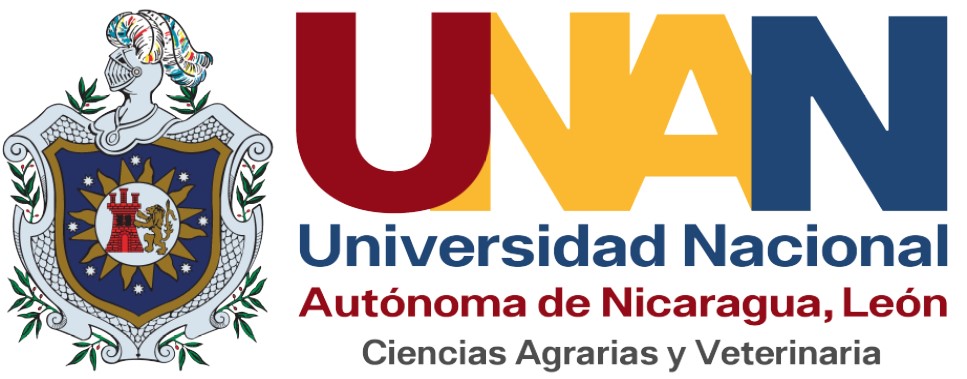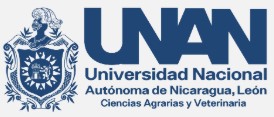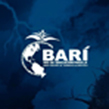Captura de Langosta en Baja California y su relación con la Actividad Solar
DOI:
https://doi.org/10.5377/ribcc.v7i13.11262Palabras clave:
Clima espacial, Clima, Produccion pesqueraResumen
Es creciente el interés por conocer los vínculos entre el comportamiento de la Actividad Solar (AS) y del Clima Espacial con numerosos procesos de la biosfera y en particular, los relacionados con la extracción de especies marinas. En este trabajo se relacionó la serie de tiempo anual (1959-2018) de captura de langosta por varias cooperativas pesqueras a lo largo de la Península de Baja California, México, con los ciclos multianuales de la AS, con el objetivo de revelar si se cumple la hipótesis de asociación entre estas variables. La relación estadística y análisis espectral entre las dos series muestran un marcado sincronismo entre las series de tiempo y la presencia en los volúmenes de captura del período principal de 11 años de la AS. Se explica la posible conexión AS-clima-océano con la variabilidad pesquera del crustáceo. Teniendo en cuenta los volúmenes de captura de langosta y la importancia económica que ello constituye para la región, se considera un aspecto importante para su posible aplicación práctica y explotación de este conocimiento en el marco de la tendencia en los ecosistemas debido a la variabilidad climática.
Palabras claves: Clima Espacial, Clima, Producción Pesquera.
Descargas
Métricas
Citas
https://doi.org/10.1134/S0006350918020021
Alfonso, I., Baisre, J., Frias, M. P. y Hernández, B. 1995. Distribución de la abundancia de
filosomas (Panulirus argus): verticalidad larval y su relación con los factores climáticos. La Habana. Revista Cubana de Investigaciones Pesqueras. 19 (1): 3-9. Ciudad de la Habana, Cuba.
Attolini, M., Galli, M. and Nanni, T. 1988. Long and Short Cycles in Solar Activity During the Last Millennia. In: Stephenson F.R., Wolfendale A.W. (Eds) Secular Solar and Geomagnetic Variations in the Last 10,000 Years. NATO ASI Series (Series C: Mathematical and Physical Sciences), vol 236. Springer, Dordrecht.
https://doi.org/10.1007/978-94-009-3011-7_3
Close 2012. Are stress responses to geomagnetic storms mediated by the cryptochrome compass system? Proc. R. Soc. B (2012) 279, 2081-2090
https://doi.org/10.1098/rspb.2012.0324
Chalmers, J. A. 1967. Atmospheric Electricity, 2nd ed., Pergamon, Oxford, U. K.
https://doi.org/10.1016/B978-0-08-012005-8.50019-7
Chambarelli et al. 2008. Temporal and preparation effects in the magnetic nanoparticles of Apis mellifera body parts. Journal of Magnetism and Magnetic Materials 320: e207-e210.
https://doi.org/10.1016/j.jmmm.2008.02.049
Chávez, E.A. y Castro, O. 2008. Impacto del cambio climático sobre las pesquerías de la zona de transición templado-cálida del Pacífico oriental mexicano. P.68-81. In: La Variabilidad Ambiental y las Pesquerías de México. López Martínez, J., (Ed) Comisión Nacional de Acuacultura y Pesca. México. 200p. doi:10.1098/rspb.2012.0324. Published online 14 March 2012.
https://doi.org/10.1098/rspb.2012.0324
Dickinson, R. E. 1975, Solar variability and the lower atmosphere, Bull. Am. Meteorol. Soc., 56, 1240-1248, Emile-Geay, J., M. A. Cane, R. Seager, A. Kaplan, and P. Almasi 2007, El Niño as a mediator of the solar influence on climate, Paleoceanography, 22, PA3210,
https://doi.org/10.1029/2006PA001304
Geller, M. A. 1988, Solar cycles and the atmosphere, Nature, 332, 584-585.
https://doi.org/10.1038/332584a0
Gmitrov J. and Ohkubo C. 2002. Artificial static and geomagnetic field interrelated impact on cardiovascular regulation. Bioelectromagnetics. 2002, 23 (5): 329-338.
https://doi.org/10.1002/bem.10020
Gosling, J. et al. 1991. Geomagnetic activity associated with earth passage of interplanetary shock disturbances and coronal mass ejections. JGR Space Physics, Volume 96, Issue A5 ,1 May 1991: 7831-7839
https://doi.org/10.1029/91JA00316
Gray, L. J., Beer, J., Geller, M., Haigh, J. D., Lockwood, M., Matthes, K., Cubasch, U.,
Emile‐Geay, J., Cane, M., Seager, R., Kaplan, A., & Almasi, P. (2007). El Niño as a mediator of the solar influence on climate. Paleoceanography, 22(3).
https://doi.org/10.1029/2006PA001304
Fleitmann, D., Harrison, G., Hood, L., Luterbacher, Meehl G., Shindell A., van Geel D., and White, W. 2010. Solar influences on Climate. Rev. Geophys., 48, RG4001, doi:10.1029/2009RG000282.
https://doi.org/10.1029/2009RG000282
Haigh, J. D., Winning A.R., Toumi, R. and Harder, J.W. 2010. An influence of solar spectral variations on radiative forcing of climate. Nature 697, Vol. 467, 7 October 2010.
https://doi.org/10.1038/nature09426
Hernández, B. y Puga M. 1995. Influencia del fenómeno El Niño en la región occidental de Cuba y su impacto en la pesquería de langosta (Panulirus argus) del golfo de Batabanó. Invest. Mar., Valparaíso, 23: 3-24.
https://doi.org/10.4067/S0717-71781995002300001
Hernández, B., Gaxiola, G., Álvarez, S., Gómez, J., Nájera S. 2003. Interannual variability of new production in the southern region of the California Current. Deep-Sea Research Part II (50):2423-2430.
https://doi.org/10.1016/S0967-0645(03)00129-2
Hernández B. et al. 1989. Algunos aspectos de las fases lunares y su relación con las capturas de langosta (panulirus argus) en el golfo de Batabanó. Cuba. Rev. Cubana de Investigaciones Pesqueras vol.14, (1-4): 72-89.
Kumosani T.A., Qari, M.H. 2003. The effect of magnetic field on the biochemical parameters of mice blood. Pak J Med Sci. 2003, 19 (1): 36-40.
Litovitz, T.A., Montrose, C.J., Wang, W. 1992. Dose-response implications of the transient nature of electromagnetic-field-induced bioeffects: theoretical hypotheses and predictions. Bioelectromagnetics. 1992, 237-246. Suppl 1.
https://doi.org/10.1002/bem.2250130721
López M. (Ed.) 2008. La Variabilidad Ambiental y las Pesquerías de México. Comisión Nacional de Acuacultura y Pesca, México, 200p.
Lopeztegui, A., Baisre, J. y Capetillo, N. 2011. Influencia del ciclo lunar en la captura de langosta espinosa Panulirus argus (Decapoda: Palinuridae) en el Golfo de Batabanó. Cuba. Rev. Biol. Trop. (Int. J. Trop. Biol. ISSN-0034-7744). Vol. 59 (1): 207-216.
https://doi.org/10.15517/rbt.v59i1.3191
Martín, H., Betanzos, A., Simanca, J., Puga, R., Tripp, A. 2017. Simulación de la deriva de larvas de langosta en aguas oceánicas adyacentes a la plataforma suroccidental de Cuba: Aplicación del modelo biofísico LADIM. Cuba. Revista de Biología Marina y Oceanografía 52(2):289-297.
https://doi.org/10.4067/S0718-19572017000200008
Mendoza, A. y Pérez-Enríquez, R. 1992. Solar activity and "El Niño". México. Geofísica Internacional, UNAM. Vol 31, No 1.
Nyqvist, D., Caroline, D., Magnar, G. J., Karen, De J., Tonje, N., Forland y Lise, D. S. 2020. Electric and magnetic senses in marine animals, and potential behavioral effects of electromagnetic surveys. Marine Environmental Research, Volume 155, March 2020, 104888
https://doi.org/10.1016/j.marenvres.2020.104888
Poloczanska et al; 2016. Responses of Marine Organisms to Climate Change across Oceans. Front. Mar. Sci. 3:62. doi: 10.3389/fmars.2016.00062.
https://doi.org/10.3389/fmars.2016.00062
Schwartz, M. D. 2013. Phenology: An Integrative Environmental Science. 2nd Edition. Springer Dordrecht Heidelberg New York London, Library of Congress Control Number: 2013943824. DOI 10.1007/978-94-007-6925-0, ISBN 978-94-007-6925-0 (eBook), 610pp.
Scott, E. and Forbush. 1958. Cosmic‐ray intensity variations during two solar cycles. Geophysical Research Vol. 63 (4), December 1958.
https://doi.org/10.1029/JZ063i004p00651
Sierra, P. et al. 1999. Impacto Medioambiental de las Perturbaciones Heliogeofísicas. Consideraciones a partir de Resultados Observacionales. México. Rev. Geofísica, Instituto de Geofísica, UNAM, México, D.F.1999, No.50 (9-23)
Sierra P., Pérez, A. O., Castellanos, B., y Zaldívar, J. 2015. Aspectos para valorar dentro de la bioeconomía y su sendero de eco - intensificación para el buen desempeño de la actividad apícola ante la variabilidad de la Actividad Solar y Geomagnética y los cambios climáticos. Revista Iberoamericana De Bioeconomía Y Cambio Climático EISSN 2410-7980, 1(1), 207-222. https://doi.org/10.5377/ribcc.v1i1.2149
https://doi.org/10.5377/ribcc.v1i1.2149
Vega-Bolaños, A., López-Salas, F., Vega-Velázquez, A., Hernández, B., Camacho-Bareño y G. Antonio Jiménez, G.A. 2019. Asentamiento de postlarvas de langosta roja (Panulirus interruptus) y su relación con el ambiente en Bahía Asunción, Baja California Sur, México. Ciencia Pesquera (2019) 27(2): 3-16.
Publicado
Cómo citar
Número
Sección
Licencia
Derechos de autor 2021 Revista Iberoamericana de Bioeconomía y Cambio Climático e-ISSN 2410-7980

Esta obra está bajo una licencia internacional Creative Commons Atribución-NoComercial-CompartirIgual 4.0.
Copyright © 2025 Rev. iberoam. bioecon. cambio clim. Universidad Nacional Autónoma de Nicaragua León (UNAN-León), Area de Conocimiento de Ciencias Agrarias y Veterinarias/ Area Especifica de Agroecología y agronegocios /Centro de Investigación Ciencias Agrarias y Veterinarias. Dirección Académica. Departamento de Investigaçión. Unidad de publicaciones y eventos cientificos.












 EDITORIAL
EDITORIAL  e-ISSN
e-ISSN


 COPYRIGHT
COPYRIGHT  Este trabajo está licenciado bajo una Licencia Internacional
Este trabajo está licenciado bajo una Licencia Internacional 












